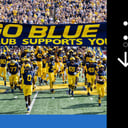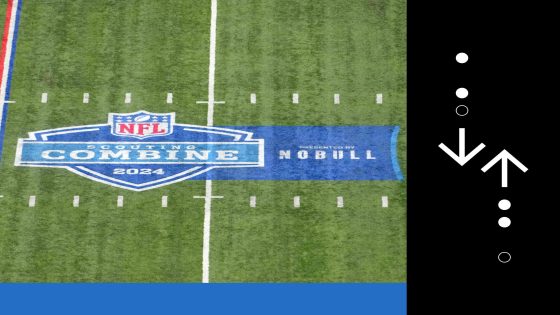IOWA CITY, Iowa — A handful of days before the Iowa football team flew to Orlando for its Jan. 1 Citrus Bowl appearance, a group of defensive players met at Pullman’s Bar & Diner just a block north of the famed Pedestrian Mall.
Although the dinner was “unorganized,” as linebacker Nick Jackson recalls, the conversation quickly focused on the future — individually and collectively. Defensive back Cooper DeJean, safety Sebastian Castro and linebacker Jay Higgins had all garnered first-team All-America honors. Cornerback Jermari Harris and defensive tackle Yahya Black were ascending players with NFL potential. Jackson registered 110 tackles after transferring from Virginia. Free safety Quinn Schulte, the defense’s glue guy, had applied to dental school. Linebacker Kyler Fisher was a key performer in sub packages.
Castro, Higgins, Harris, Fisher and Schulte all had the option to play an extra year of college because of the NCAA’s pandemic waiver. Jackson applied for a waiver because his 2022 season ended two games early after three of his Virginia teammates were killed in a shooting on campus. Black and DeJean had their traditional senior years available.

Many key pieces of Iowa’s 2023 defense return in 2024. The staying power could be trending across college football. (Jeffrey Becker / USA Today)
“In the moments like that, there’s a possibility we only have a week left with each other,” Jackson said. “And when you think about it like that, then you’re like, ‘Dang, but we could have another year together.’ I think a lot of guys felt that it felt that way.
“Ultimately, I think we all came back, except for the first-rounder.”
That December dinner in downtown Iowa City presented the intersection of the NFL and college football worlds in a way previously unrecognizable. DeJean, a probable first-round selection, opted for the NFL, but he was one of just 58 underclassmen across college football to declare for the draft, the lowest total since 2010 and down from 130 three years ago.
Aided by college athletes’ ability to profit off their name, image and likeness — but not exclusively for that reason — the other Iowa players chose to return for one more season. In years past, Castro, Higgins, Black and perhaps Jackson and Harris would have earned NFL Scouting Combine invitations and spent the offseason training for the draft. Instead, the guts of Iowa’s elite defense will return nearly intact.
The group’s decision represents a microcosm of how NIL has helped college football teams compete with NFL opportunities. Players can return to school as starters, continue developing and earn more compensation from NIL rather than risk their football future as a late-round pick or undrafted free agent. That option also has ramifications for NFL teams.
With early entries at a 14-year low and many traditional draft-eligible prospects staying in school, there’s concern the draft’s later rounds aren’t as deep as in previous years, Denver general manager George Paton conceded at the NFL combine. The changing landscape has forced general managers to adjust their draft strategy this offseason.
“I kind of was, I’m not going to say scared about that, I kind of had thoughts that that might be coming, that those numbers might be dropping,” Detroit Lions general manager Brad Holmes said. “I wouldn’t be surprised if those numbers drop even more next year. Obviously, traditionally the underclassmen have been the meat of the first two rounds of the draft, so we’ll just kind of see how that changes in the very end.”

GO DEEPER
Has NIL made college football’s 85-scholarship limit obsolete?
NIL has shifted a few options back to the players. In the past, borderline draft prospects would leave and receive a small signing bonus as a late-round pick or undrafted free agent. According to Spotrac, a database for sports finances, the top seventh-round pick will receive a $118,000 bonus in this year’s draft. It’s believed that many starters in Power 5 football programs earn more than that, and the NIL numbers run significantly higher for college quarterbacks.
“I’m sure across the country, NIL has a huge impact on the decision-making process for late-round guys,” Jackson said. “I think that’s more of a quarterback-to-receiver-running back kind of thing because they have the most name, image and likeness versus defensive guys. That’s just the market that we live in.”
Brad Heinrichs, CEO of Iowa’s The Swarm Collective, said the shift of more players opting to stay in college is especially prevalent for the “mid-to-late round draft picks.”
“The NFL practice squad pay is around $200,000 per year,” Heinrichs said. “If a kid can get anywhere in the ballpark of that by staying in school, it can make a ton of sense for them if they are projected to be a late-round pick. The NIL money is guaranteed. In the NFL you can get cut at any time.”
Jackson, who obtained his NCAA waiver to play in 2024, said his initial draft grade was between Rounds 5 and 7 or as a priority free agent. He was adamant he returned to Iowa because of his connection with his teammates and the opportunity to improve under assistant head coach/linebackers coach Seth Wallace.

JT Tuimoloau was one of several Ohio State players who had high NFL Draft projections but opted to return to Columbus. (Adam Cairns / Columbus Dispatch / USA Today)
Heinrichs said the program’s culture and focus on development was a bigger selling point than the money.
“The family atmosphere at Iowa is different from the NFL, and our coaches are teachers at heart,” Heinrichs said. “In the NFL, coaches expect results and aren’t there to teach a player how to play a position.”
Ohio State also had several high-round draft prospects return for another year, but the situation is not universal. Several players with options still chose the professional route. Illinois wide receiver Isaiah Williams debated returning to college for one more season because of NIL, but his NFL aspirations won out.
“A lot of people say, ‘don’t make a decision based on NIL,’ but it’s a real thing,” said Williams, a first-team All-Big Ten receiver. “It’s something that I really thought about because at the end of the day, that is guaranteed money and this is not guaranteed.
“The biggest thing for me was, ‘Am I ready to make that jump?’ As long as I can remember, my dream has been to make it to the NFL. I feel like I’m ready to compete against the best in the nation. Every answer was yes. So it’s not really about the money at this point. Go chase your dream.”
Nearly all of the COVID-19-related eligibility waivers will expire after this season, which will send prospects like Higgins and Castro back to NFL Draft boards on a traditional timeline. But for those who stay in school a little longer because of NIL, it’s not a bad situation long-term for the NFL, either.
“Look, I always think the more a guy can play in college, the more experience he gets, the better it is,” Indianapolis Colts GM Chris Ballard said. “They come in more prepared. It’s not the world we live in — you’re going to get guys that are young — and you just deal with it either way, and you’ve just got to have a plan to handle it, whatever the case is.”
Editor’s note: This is part of a series of stories examining the transfer portal, NIL and their impact on college sports. The spring football transfer portal window is open from April 16 to April 30. Find all transfer portal stories here.
(Top photo: Kirby Lee / USA Today)



